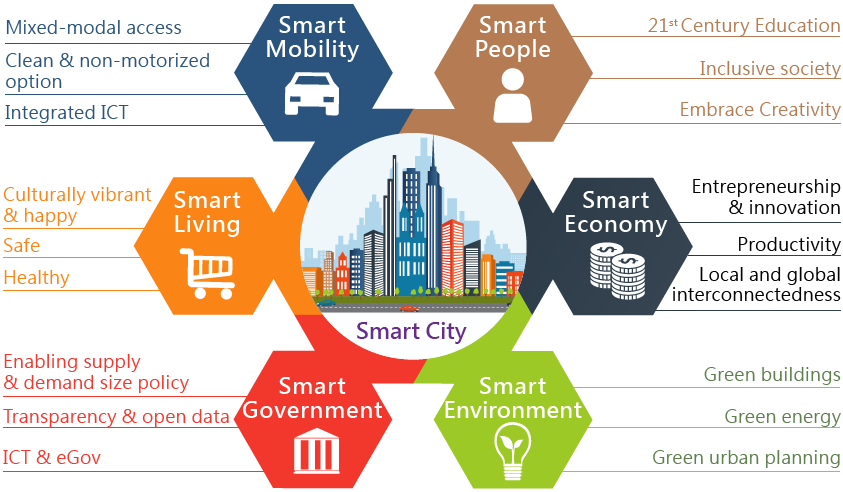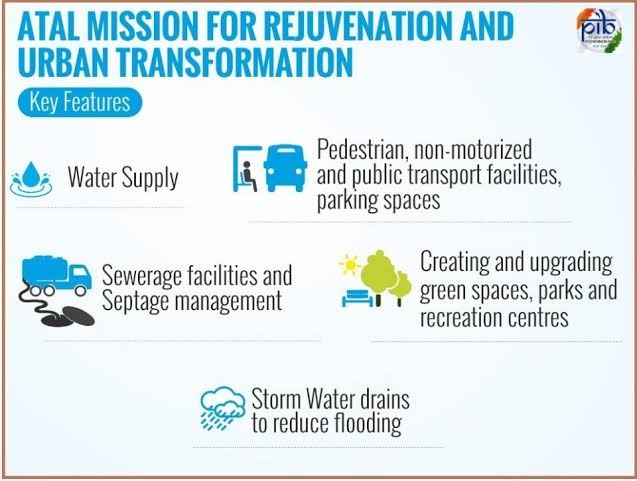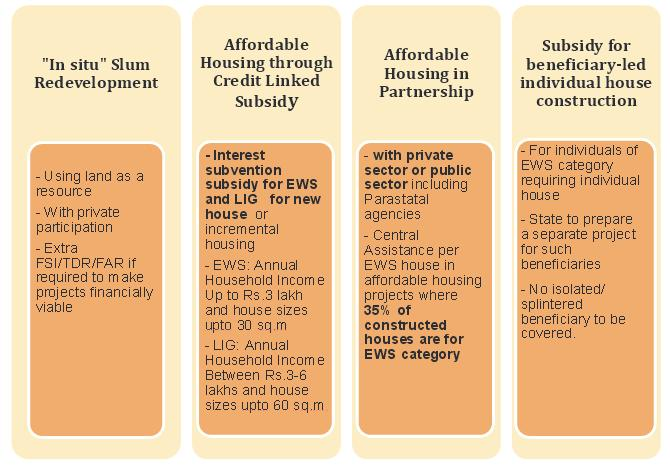



Copyright infringement not intended
Picture Courtesy: INDIAN EXPRESS
The Economic Survey 2023-24 projects that by 2030, over 40% of the population will reside in urban areas, highlighting the need for effective urban planning to manage growth, enhance liveability, and foster economic development.
It is a process that involves designing and developing land use and the built environment, including essential elements like air, water, transportation, and communication networks.
Its main goal is to promote the physical, economic, and social progress of cities.
Rapid Urbanisation and Population Growth
By 2030, urban population is projected to be over 40%, leading to increased pressure on existing urban infrastructure.
Economic Contribution
Cities contribute nearly 60% of GDP, are economic growth engines. Efficient urban planning is crucial for optimal function, attracting investment, creating jobs, and fostering innovation. (Source: NITI Aayog)
Infrastructure Deficit
Cities lack basic infrastructure like water supply, sanitation, housing, and transport. For example, over 47% of houses built under PMAY-U for the urban poor remain unoccupied due to a lack of supporting infrastructure. (Source: Standing Committee on Housing and Urban Affairs)
Quality of Life and Sustainability
Planned cities improve urban living through better public services, reduced pollution, and stronger public health and social unity, aligning with Sustainable Development Goal.
Predominance of Land-Use Planning
Traditional urban planning often neglects economic vision, resource management, climate action, and social equity, leading to fragmented development, poor infrastructure, and cities that fail as economic growth hubs.
According to a NITI Aayog report, 65% of India's 7,933 urban settlements lacked a master plan, leading to haphazard construction, traffic congestion, pollution, and flooding.
Governance and Institutional Gaps
The 74th Constitutional Amendment Act of 1992 sought to decentralize urban governance by creating Urban Local Bodies (ULBs), District Planning Committees (DPCs), and Metropolitan Planning Committees (MPCs), but its implementation remains weak.
States have not adequately decentralized funds, functions, and functionaries to ULBs, causing fragmented agencies, delayed projects, wasted resources, and poor accountability.
Shortage of urban planners. NITI Aayog reported that India has only one planner for every 100,000 people.
Inadequate Funding and Resource Mobilisation
Municipalities generate only 31-34% of their revenue independently. Municipal revenues and expenditures have stagnated at around 1% of GDP for over a decade, significantly lower than Brazil (7%) and South Africa (6%). (Source: RBI Report on municipal finances)
ULBs fail to realize the full potential of property tax due to outdated assessments, lack of digitization, and weak enforcement. A 2023 Ministry of Housing and Urban Affairs (MoHUA) report stated many cities tax only about 70% of eligible properties.
Informal Sector and Slum Development
Rapid urbanization has led to an increase in informal settlements and slums, with 17% of urban households living in slums as per the 2011 Census. These areas suffer from poor sanitation and hygiene and are often neglected in urban planning.
Environmental Degradation and Climate Vulnerability
Poor air quality levels as 94/100 most polluted cities are in India as per the World Air Quality City Ranking 2024.
Indian cities are warming at nearly twice the rate of the rest of the country, with an average increase of 0.53°C per decade, and 0.2°C directly attributable to urbanization, leading to urban heat island effects. (Source: ‘Nature' journal)
NITI Aayog predicted that 40% of Indian population would face water scarcity by 2030. Poor drainage systems and the encroachment of wetlands exacerbate urban flooding, as seen in Chennai (2015) and Mumbai (2017).
Outdated Legal and Regulatory Frameworks
Outdated, rigid, colonial-era planning laws, like the Town and Country Planning Acts, fail to address modern urban growth challenges despite empowering states for master plans.
Lack of Citizen Participation
Urban planning, often top-down with minimal public engagement, struggles with implementation and local ownership due to plans not reflecting community needs.
Launched in 2015, it aims to develop 100 cities into "smart cities" promoting citizen-centric governance, efficient services, and robust infrastructure using technology.
As of November 2024, 91% of projects have been completed in 100 Smart Cities, including Integrated Command and Control Centres and smart roads.
 Atal Mission for Rejuvenation and Urban Transformation (AMRUT)
Atal Mission for Rejuvenation and Urban Transformation (AMRUT)
Focuses on improving basic urban infrastructure such as water supply, sewerage, stormwater drainage, urban transport, and green spaces in 500 cities.
AMRUT 2.0 (launched in 2021) aims for universal water supply coverage and liquid waste management.
 Pradhan Mantri Awas Yojana-Urban (PMAY-U)
Pradhan Mantri Awas Yojana-Urban (PMAY-U)
Aims to provide "Housing for All" in urban areas. A new Rental Housing Vertical under PMAY 2.0 benefits migrant populations and industrial workers.
 Swachh Bharat Mission-Urban (SBM-U)
Swachh Bharat Mission-Urban (SBM-U)
Concentrates on improving sanitation and solid waste management, achieving progress in waste processing and open defecation-free cities.
The Union Budget 2025-26 allocated ₹10,000 crore for this fund to incentivize states for urban planning reforms.
Integrated Spatial Planning: A Holistic Approach
Beyond Restrictive Zoning: Shift from traditional land-use zoning to integrated spatial planning, encompassing economic, social, infrastructural, and environmental aspects.
Aligning with Regional Goals: Adopt NITI Aayog's recommendation to merge urban land-use and economic strategies, ensuring cities are aligned with regional industrial and service sector growth objectives.
Strengthening Urban Governance and Institutions
Empowering Urban Local Bodies (ULBs): Grant ULBs greater fiscal and functional autonomy per the 74th Amendment, empowering them to recruit staff.
Activating Planning Committees: Operationalize District Planning Committees (DPCs) and Metropolitan Planning Committees (MPCs) to facilitate coordinated planning across jurisdictions.
Capacity Building: Urban planners and ULB officials need training in urban economics, environmental planning, digital design, and climate resilience. The NITI Aayog (2021) recommended forming a high-powered committee to re-engineer urban planning governance.
Sustainable and Climate-Resilient Urban Development
Green Infrastructure: Integrate green infrastructure, nature-based solutions, and urban forestry into planning, to combat the urban heat island effect, improves air quality, and enhances water management.
Climate Adaptation: Urban planning should incorporate low-carbon mobility, energy efficiency, and disaster preparedness, with the Blue Ports Initiative serving as a useful model for climate resilience in port cities.
Leveraging Technology and Data
GIS-based Planning: Utilize Geographic Information Systems (GIS) for accurate land records, property assessments, and real-time monitoring of urban development.
Smart Solutions: Implement digital twin technologies and data-driven decision-making to ensure efficient service delivery and infrastructure management.
Innovative Financing and Resource Mobilization
Strengthening ULB Finances: Enhance ULBs' own-source revenue by reforming property tax administration through GIS mapping and regular revaluation, alongside improving collection mechanisms.
Diversifying Funding: Promote innovative financing mechanisms such as municipal bonds (e.g., Ghaziabad and Indore's successful use of green bonds), Public-Private Partnerships (PPPs), and viability gap funding for urban infrastructure projects.
State Finance Commissions: Ensure the timely constitution of State Finance Commissions with clear Terms of Reference to guarantee adequate and predictable transfers to ULBs.
Inclusive Planning and Citizen Participation
Bottom-Up Approach: Adopt a bottom-up planning approach, involving citizens and local communities through participatory tools throughout the entire planning cycle.
Addressing Informal Settlements: Address informal settlements through participatory upgrading schemes, providing basic services and tenure security.
Legal and Regulatory Reforms
Modernizing Legislation: Modernize outdated Town Planning Acts and introduce flexible zoning regulations to adapt to evolving urban dynamics.
Streamlining Approvals: Streamline approval processes to reduce delays and combat corruption in urban development projects.
Achieving sustainable urbanization and "Viksit Bharat" by 2047 requires India to shift from a restrictive land-use focus to an integrated urban planning approach that prioritizes economic growth, social equity, environmental sustainability, robust governance, empowered local bodies, innovative financing, technology, and genuine citizen participation.
Source: INDIAN EXPRESS
|
PRACTICE QUESTION Q. Critically analyze the evolution of urban planning in post-independence India. 150 words |
PMAY-U was launched in 2015 to provide affordable housing to the urban poor, to achieve "Housing for All". The scheme helps construct, purchase, or renovate houses through four main components: in-situ slum redevelopment, credit-linked subsidies, affordable housing in partnership, and subsidies for individual house construction.
It was launched in 2015, to promote sustainable and inclusive cities by providing core infrastructure and smart solutions to improve the quality of life for citizens. It encourages a mix of retrofitting, redevelopment, and greenfield development, along with Pan-city initiatives involving technology to enhance urban services and governance.
AMRUT was launched in 2015 to ensure that every urban household has access to basic civic amenities like a tap with a water supply and a sewerage connection. It focuses on water supply, sewerage management, storm-water drainage, urban transport, and developing green spaces in 500 cities. AMRUT 2.0 was launched in 2021 to promote the circular economy of water and universal coverage of water supply in all statutory towns.
© 2025 iasgyan. All right reserved